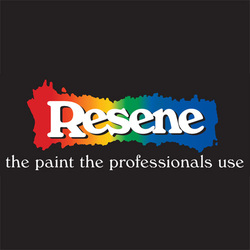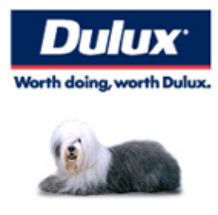Interior Painting
What you should Expect ...

1. Your furniture, floors, and carpet to be protected from start to finish by drop cloths or plastic.
2. All surfaces to be painted to be thoroughly washed with a mild detergent or solevent to remove all dirt, grease, mildew,soap or film that may hay have accumulated over the years. This step will help to ensure proper adhesion of the fresh paint.
3. Water marks, smoke stains, pen marks and other unsightly blemishes that could bleed through the new paint, to be properly prepared with the appropriate primer or sealer.
4. Any loose paint or other imperfections on walls or ceilings to be repaired by scraping and sanding.
5. Cracks and holes in walls and ceilings to be repaired with the appropriate "polyfiller" sanded, and primed. Fibreglass tape can be appliedover cracks where neccessary for a more permanant repair.
6. Holes in woodwork to be filled, sanded smooth, and primed. Imperfections and damaged areas to be smoothed by sanding.
7. Open joints and gaps between surfaces to be caulked with acrylic gap fillers such as polygap sealant a a neater and more finished appearance.
8. Glossy surfaces to be dulled by sanding or undercoating to ensure proper paint adhesion.
9. Quality materials to be used. Quality materials give the best result and last longer.This includes Dulux, Resenes, Wattyl, Taubmans, Benjamin Moore.
10. All work is to be completed in a neat and professional manner by skilled craftspeople who are polite, friendly, and work efficiently.
11. Waste material and used solvents to be disposed of safely in an environmentaly responsible manner.
12. Touch up paint to be left for your future convenience and labelled accordingly.
2. All surfaces to be painted to be thoroughly washed with a mild detergent or solevent to remove all dirt, grease, mildew,soap or film that may hay have accumulated over the years. This step will help to ensure proper adhesion of the fresh paint.
3. Water marks, smoke stains, pen marks and other unsightly blemishes that could bleed through the new paint, to be properly prepared with the appropriate primer or sealer.
4. Any loose paint or other imperfections on walls or ceilings to be repaired by scraping and sanding.
5. Cracks and holes in walls and ceilings to be repaired with the appropriate "polyfiller" sanded, and primed. Fibreglass tape can be appliedover cracks where neccessary for a more permanant repair.
6. Holes in woodwork to be filled, sanded smooth, and primed. Imperfections and damaged areas to be smoothed by sanding.
7. Open joints and gaps between surfaces to be caulked with acrylic gap fillers such as polygap sealant a a neater and more finished appearance.
8. Glossy surfaces to be dulled by sanding or undercoating to ensure proper paint adhesion.
9. Quality materials to be used. Quality materials give the best result and last longer.This includes Dulux, Resenes, Wattyl, Taubmans, Benjamin Moore.
10. All work is to be completed in a neat and professional manner by skilled craftspeople who are polite, friendly, and work efficiently.
11. Waste material and used solvents to be disposed of safely in an environmentaly responsible manner.
12. Touch up paint to be left for your future convenience and labelled accordingly.
Exterior Painting
What you should expect ...

1. All areas around your business or home including your shrubs, landscaping and paths to be protected from start to finish by drop cloths or plastic.
2. All surfaces to be painted to be thoroughly washed and cleaned. This step removes harmful pollutants and dirt, and helps new paint adhere to the existing surface.
3. Mildew (which can attack and degrade the paint coating from the outside or inside) to be treated and killed.
4. All areas of loose paint to be removed. Further sanding and smoothing may be necessary for maintenance or cosmetic considerations. An appropriate primer to be applied to all bare wood or metal to assure proper adhesion of the new paint. This step also helps prevent future peeling in these areas.
5. Any loose caulking to be removed and replaced. Any open gaps to be filled with new caulking to prevent rain water from penetrating below the surface.
6. All loose nails to be reset and re-puttied as necessary.
7. Quality materials to be used. Quality materials give the best result and last longer.This includes Dulux, Resenes, Wattyl, Taubmans, Benjaman Moore.
8. All work is to be completed in a neat and professional manner by skilled craftspeople who are polite, friendly, and work efficiently.
9. All excess paint to be removed from windows and the entire area to be left clean and tidy.
10. Waste material and used solvents to be disposed of safely in an environmentally responsible manner.
11. Touch up paint to be left for your future convenience and labeled accordingly.
12. The proper Occupational Health and safety approved procedure and equipment to be employed so that your job can be completed safely.
2. All surfaces to be painted to be thoroughly washed and cleaned. This step removes harmful pollutants and dirt, and helps new paint adhere to the existing surface.
3. Mildew (which can attack and degrade the paint coating from the outside or inside) to be treated and killed.
4. All areas of loose paint to be removed. Further sanding and smoothing may be necessary for maintenance or cosmetic considerations. An appropriate primer to be applied to all bare wood or metal to assure proper adhesion of the new paint. This step also helps prevent future peeling in these areas.
5. Any loose caulking to be removed and replaced. Any open gaps to be filled with new caulking to prevent rain water from penetrating below the surface.
6. All loose nails to be reset and re-puttied as necessary.
7. Quality materials to be used. Quality materials give the best result and last longer.This includes Dulux, Resenes, Wattyl, Taubmans, Benjaman Moore.
8. All work is to be completed in a neat and professional manner by skilled craftspeople who are polite, friendly, and work efficiently.
9. All excess paint to be removed from windows and the entire area to be left clean and tidy.
10. Waste material and used solvents to be disposed of safely in an environmentally responsible manner.
11. Touch up paint to be left for your future convenience and labeled accordingly.
12. The proper Occupational Health and safety approved procedure and equipment to be employed so that your job can be completed safely.
